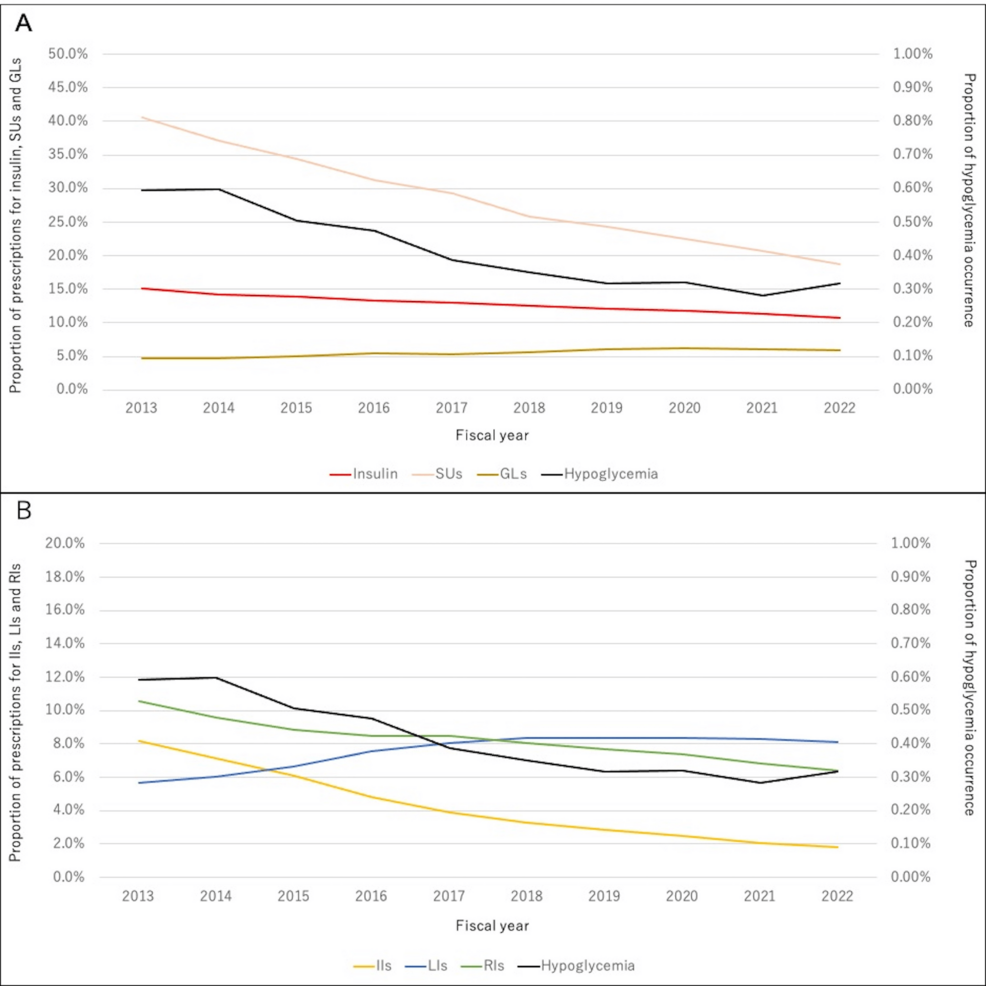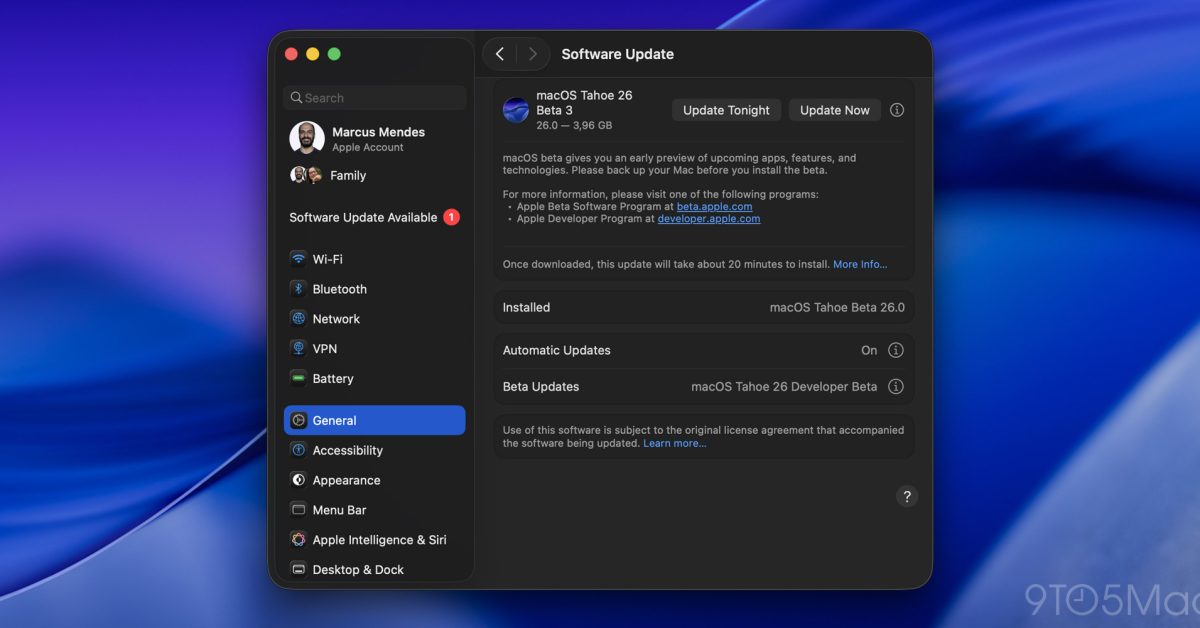Introduction
Spinal degenerative diseases, such as degenerative disc disease and spondylolisthesis, are significant causes of chronic back pain and functional disability.1–4 Transforaminal lumbar interbody fusion (TLIF) has emerged as a widely adopted surgical procedure to treat these conditions, aiming to restore spinal stability through vertebral fusion.5 TLIF involves the placement of an interbody cage into the disc space after the removal of the damaged disc, which promotes fusion between adjacent vertebrae.6,7 Compared to other lumbar fusion techniques, TLIF allows for a minimally invasive approach that reduces tissue disruption and postoperative recovery time.8
One of the key factors influencing the success of TLIF is bone health, particularly bone mineral density (BMD). Patients with osteopenia or osteoporosis are at an increased risk for complications such as cage subsidence, pedicle screw loosening, and pseudarthrosis—conditions that hinder successful fusion and may require revision surgery.9–12 Therefore, understanding and optimizing bone health is crucial for improving surgical outcomes in TLIF.13 Recent advancements in bone health assessment technologies, including high-resolution imaging techniques and novel biomarkers, have improved our ability to evaluate BMD more accurately and predict outcomes in spinal fusion surgeries.
This systematic review seeks to provide clinical insights into TLIF procedures by examining key factors that enhance and monitor bone health following spinal fusion surgery. Specifically, we will explore the predictive value of BMD assessments, the role of bone graft materials in promoting fusion, and methods for monitoring postoperative bone health to prevent complications.
Materials and Methods
This systematic review follows the Preferred Reporting Items for Systematic Reviews and Meta-Analyses (PRISMA) guidelines,14 as shown in Figure 1. The primary objective is to evaluate the impact of bone health on TLIF outcomes, focusing on BMD, cage subsidence, pseudarthrosis rates, and fusion success. A comprehensive literature search was conducted across PubMed, Scopus and Cochrane databases to identify relevant studies published between 2010 and 2024. The search terms included combinations of “transforaminal lumbar interbody fusion”, “TLIF”, “bone mineral density”, “cage subsidence”, “osteoporosis”, “pseudarthrosis”, “bone graft”, and “fusion monitoring”. Studies were included if they provided clinical or radiographic outcomes related to TLIF and bone health.
|
Figure 1 Selection criteria flow chart.
Notes: PRISMA figure adapted from Liberati A, Altman D, Tetzlaff J et al. The PRISMA statement for reporting systematic reviews and meta-analyses of studies that evaluate health care interventions: explanation and elaboration. Journal of clinical epidemiology. 2009;62(10). Creative Commons.14.
|
In this review, the studies considered for inclusion were carefully selected based on several well-defined criteria an they are shown in Table 1.9,15–23 Primarily, we focused on studies that investigated patients who had undergone transforaminal lumbar interbody fusion (TLIF) surgery to address degenerative lumbar conditions. Our aim was to gather comprehensive insights into the role of bone mineral density (BMD), the materials used for bone grafting, the occurrence of cage subsidence, and the issue of pseudarthrosis—key factors that directly influence the success of TLIF procedures. The types of studies included varied, encompassing clinical trials, cohort studies, retrospective reviews, and systematic reviews, provided they were conducted on human subjects. To ensure relevance and consistency, only studies published in English between 2010 and 2024 were included in our analysis.
 |
Table 1 Studies Included in This Systematic Review
|
Conversely, we excluded certain types of studies that did not meet our review’s objectives. Case reports and conference abstracts were omitted, as they often lack the depth of data required for a systematic analysis of TLIF outcomes. Similarly, studies focusing on other spinal fusion techniques that did not provide specific insights into TLIF were excluded to maintain a clear focus. Animal studies and preclinical trials were also not considered, as our review concentrated on clinical outcomes in human populations.
For each included study, a structured approach was used to extract the necessary data. Key information collected included the study design and sample size, offering insight into the robustness and scope of each study. We also examined patient demographics, such as age, sex, and the presence of comorbidities, which are known to influence the outcomes of spinal fusion surgeries. Preoperative BMD assessments, including tools like DEXA scans and MRI-based vertebral bone quality (VBQ) scores, were recorded to assess the correlation between bone health and postoperative complications.
Furthermore, details about the surgical techniques used, such as standard TLIF or minimally invasive TLIF (MIS-TLIF), were documented to explore any potential differences in outcomes between these approaches. Postoperative outcomes, such as the incidence of cage subsidence, pseudarthrosis, fusion rates, and screw loosening, were also critical elements of our data extraction process. Additionally, we paid close attention to the types of bone graft materials employed—whether autografts, allografts, or bone morphogenetic proteins (BMP)—as these materials significantly affect the fusion process. Lastly, the methods used to monitor bone health postoperatively, including radiography and CT scans, were collected to provide insights into the effectiveness of these techniques in detecting complications early.
Quality Assessment
The methodological quality of the studies was evaluated using the Newcastle-Ottawa Scale (NOS) for observational studies and the Cochrane Risk of Bias tool for randomized controlled trials.24 Studies with a score of 6 or above on the NOS or low risk of bias were considered of high quality as shown in Table 2.
 |
Table 2 Risk of Bias Assessment
|
Results
For this study, a total of 207 articles were initially identified. After removing all duplicates, a set of 94 articles remained for screening. Following the screening process and the application of inclusion and exclusion criteria, ten articles were selected (Table 1).
Bone Mineral Density and TLIF Outcomes
Several studies emphasized the importance of preoperative BMD assessment in predicting TLIF outcomes. Low BMD, particularly in osteopenic and osteoporotic patients, was consistently associated with higher rates of complications, such as cage subsidence and screw loosening.25–28 For instance, Ai et al (2024)15 demonstrated that MRI-based vertebral bone quality (VBQ) and endplate bone quality (EBQ) scores were strong predictors of cage subsidence. Higher VBQ and EBQ scores correlated with an increased risk of subsidence, with a cut-off VBQ score of 3.4 predicting subsidence with high sensitivity and specificity.
Similarly, Bekas et al (2024) highlighted that lower BMD significantly affects the success of lumbar interbody fusion, including TLIF, and increases the likelihood of implant failure. The review of these studies suggests that patients with osteoporosis or osteopenia should undergo thorough BMD evaluations prior to surgery, as these assessments can inform surgical planning and the choice of implants and bone grafts.16
Cage Subsidence and Predictive Factors
Cage subsidence is a critical complication following TLIF that can result in loss of intervertebral height and revision surgery.29 Studies have explored various methods for predicting subsidence risk preoperatively. Khoylyan et al (2024) demonstrated the clinical utility of MRI-based VBQ scores in predicting subsidence in patients undergoing TLIF and posterior lumbar interbody fusion (PLIF). A VBQ score of 2.70 was found to have 100% sensitivity in predicting subsidence based on segmental lordosis changes.17
The study by Chang et al (2024) found that patients with osteopenia had a significantly higher rate of screw loosening and cage subsidence following minimally invasive TLIF (MIS-TLIF). The research highlighted that the risk of complications is significantly greater in osteopenic patients compared to those with normal BMD, underscoring the need for more cautious surgical planning in these populations.9
Graft Materials and Fusion Success
A critical factor in the success of TLIF is the choice of bone graft material, which influences the rate of spinal fusion. Kim et al (2023) provided a comprehensive comparison of different graft materials, including autografts, allografts, and bone morphogenetic proteins (BMP). Autologous bone grafts, particularly iliac crest bone grafts (ICBG), remain the gold standard for TLIF due to their osteogenic, osteoconductive, and osteoinductive properties. However, the use of BMP has gained popularity due to its ability to promote bone growth without the morbidity associated with iliac crest harvesting.18
Despite the promising results with BMP, Zhong et al (2024) found no significant reduction in the rate of pseudarthrosis when BMP was used in TLIF procedures compared to other graft materials. The study concluded that while BMP may enhance fusion rates, it does not significantly decrease the likelihood of revision surgery due to pseudarthrosis, particularly in patients with underlying comorbidities such as diabetes.19
Pseudarthrosis and Radiographic Monitoring
Pseudarthrosis, or nonunion of the vertebrae after fusion surgery, is a significant complication that affects patient outcomes and often necessitates revision surgery. Issa et al (2024) conducted a study on the use of computed tomography (CT) scans for assessing pseudarthrosis after lumbar fusion surgeries. Their findings demonstrated that CT scans remain the gold standard for detecting pseudarthrosis, especially when evaluating interbody fusion and facet joint fusion.20
The study by Chen et al (2024) further examined the role of modic changes in influencing fusion rates. The meta-analysis revealed that patients with modic changes had a lower fusion rate at 3- and 6-month follow-ups compared to those without such changes. This finding highlights the importance of considering modic changes when assessing fusion progress postoperatively.21
Surgical Techniques and Complications
The comparison between different surgical techniques for TLIF, particularly MIS-TLIF versus traditional open TLIF, revealed notable differences in complication rates. Formby et al (2016) found that patients with osteoporosis who underwent TLIF had significantly higher rates of cage subsidence and iatrogenic fractures compared to non-osteoporotic patients. However, the radiographic complications did not translate into worse clinical outcomes, suggesting that careful patient selection and monitoring can mitigate the risks associated with osteoporosis in spinal fusion surgeries.22
In terms of minimally invasive approaches, Chang et al (2024) reported a higher rate of screw loosening in osteopenic patients undergoing MIS-TLIF compared to those receiving dynamic stabilization. This suggests that while MIS-TLIF offers benefits such as smaller incision size and faster recovery, it may not be the optimal choice for patients with compromised bone quality.21
Discussion
The findings of this systematic review highlight the critical role of bone health in the success of transforaminal lumbar interbody fusion (TLIF) surgeries, particularly in patients with low bone mineral density (BMD). TLIF remains a preferred surgical approach for treating degenerative lumbar conditions, yet its success largely depends on patient-specific factors such as bone quality, preoperative preparation, and the choice of graft material.
Several studies emphasized that low BMD, including osteopenia and osteoporosis, significantly increases the risk of complications such as cage subsidence, screw loosening, and pseudarthrosis.9,15,22 In particular, Ai et al (2024) demonstrated that both vertebral bone quality (VBQ) and endplate bone quality (EBQ) scores, derived from MRI assessments, were predictive of postoperative cage subsidence in TLIF patients.15 These findings suggest that preoperative BMD assessment, through techniques like dual-energy X-ray absorptiometry (DEXA) or MRI-based VBQ, should be integral to surgical planning for patients undergoing TLIF. Patients with lower BMD scores could benefit from alternative or enhanced surgical strategies, such as the use of stronger interbody cages or biological enhancements to mitigate the risks of implant failure.
Cage subsidence is a well-documented complication that can compromise the stability of the interbody fusion and lead to further surgical intervention.30,31 The studies reviewed showed a clear association between BMD and the likelihood of subsidence,32 with Khoylyan et al (2024) suggesting that MRI-based VBQ scores may offer a clinically sensitive threshold for predicting subsidence risk.17 This finding is particularly important for surgeons aiming to prevent postoperative complications by adjusting surgical techniques or choosing more robust cage materials based on preoperative imaging.
The utility of MRI-based assessments provides a radiation-free alternative to conventional BMD assessment methods, offering a convenient and reliable tool for preoperative risk stratification. By integrating these scoring systems into routine pre-surgical evaluations, surgeons can make informed decisions that improve patient outcomes, particularly for those at higher risk for cage subsidence.
One of the key variables affecting fusion success in TLIF is the type of bone graft used. Kim et al (2023)9 provided a detailed comparison of autografts, allografts, and bone morphogenetic proteins (BMP), highlighting that autologous bone grafts, particularly iliac crest bone grafts (ICBG), remain the gold standard for promoting fusion due to their osteogenic properties. However, the morbidity associated with harvesting autografts has led to increased interest in alternative materials, such as BMP.
Despite BMP’s promise in enhancing fusion rates, Zhong et al (2024)19 found no significant reduction in pseudarthrosis or reoperation rates when BMP was used compared to other graft materials. This suggests that while BMP may aid in achieving fusion, it may not offer significant advantages in preventing pseudarthrosis in the context of single-level TLIF procedures. The use of BMP may still be warranted in cases where autografts are not feasible, but careful consideration should be given to the patient’s overall health and potential risk factors such as diabetes, which can increase the likelihood of pseudarthrosis.
Monitoring bone health and fusion success postoperatively is crucial to preventing complications such as pseudarthrosis. Several studies in this review support the use of computed tomography (CT) as the gold standard for assessing bone fusion, particularly in detecting pseudarthrosis.19,20 Issa et al (2024) emphasized that CT scans provide a reliable method for evaluating fusion in the posterolateral gutters, facet joints, and interbody spaces, which are critical areas for determining the success of TLIF.20
In contrast, Chen et al (2024)9 suggested that the presence of modic changes can negatively impact the fusion rate, particularly in the early postoperative period. This highlights the need for regular and comprehensive radiographic monitoring, particularly in patients with modic changes or low BMD. Early detection of potential issues through CT or MRI can guide timely interventions, such as pharmacological support with agents that promote bone healing or revision surgery.
Given the critical influence of bone health on TLIF outcomes, optimizing bone quality preoperatively is crucial, especially for patients with osteopenia or osteoporosis. Notably, strategies to improve bone health include pharmacological interventions such as bisphosphonates, selective estrogen receptor modulators (SERMs)33 and the use of bone-anabolic agents.34 While the studies reviewed provide valuable insights into enhancing and monitoring bone health in TLIF, several limitations remain. Many studies lacked long-term follow-up, which is critical for understanding the durability of fusion and the impact of BMD on outcomes over time. Additionally, there is limited consensus on the exact BMD threshold that significantly increases the risk of complications such as subsidence or pseudarthrosis, suggesting a need for future research to define these parameters more clearly.
Moreover, while BMP and other graft materials have been extensively studied, there remains a lack of uniformity in the metrics used to evaluate their effectiveness. Standardized measures of fusion success, particularly in patients with low BMD, would allow for more robust comparisons across studies and help refine clinical guidelines.
Future research should focus on longitudinal studies that track the long-term outcomes of TLIF in osteopenic and osteoporotic patients, as well as the development of novel biomaterials or pharmacological agents that specifically target bone health in the spinal fusion context. Additionally, the integration of advanced imaging techniques, such as MRI-based scoring systems, into routine clinical practice could be further explored to improve preoperative risk assessments and postoperative monitoring.
Conclusion
In conclusion, this systematic review underscores the importance of enhancing and monitoring bone health in patients undergoing TLIF. Preoperative BMD assessments, such as MRI-based VBQ scores, provide valuable insights into the risk of complications like cage subsidence and pseudarthrosis, enabling more tailored surgical strategies. While autografts remain the gold standard for bone grafting in TLIF, BMP and other alternative materials offer viable options for patients in whom autograft harvesting is not feasible. Postoperative monitoring with CT scans remains crucial for detecting complications early, particularly in high-risk patients with low BMD or modic changes.
Further research is needed to establish clear BMD thresholds for surgical planning and to evaluate the long-term effectiveness of different graft materials in improving fusion success. By addressing these gaps, future studies can contribute to more personalized and effective treatment strategies for patients undergoing TLIF.
Data Sharing Statement
The datasets generated during and/or analyzed during the current study are available from the corresponding author upon reasonable request.
Author Contributions
All authors made a significant contribution to the work reported, whether that is in the conception, study design, execution, acquisition of data, analysis and interpretation, or in all these areas; took part in drafting, revising or critically reviewing the article; gave final approval of the version to be published; have agreed on the journal to which the article has been submitted; and agree to be accountable for all aspects of the work.
Disclosure
The authors declare that they have no conflict of interest to disclose.
References
1. De Simone M, Choucha A, Ciaglia E, et al. Discogenic low back pain: anatomic and pathophysiologic characterization, clinical evaluation, biomarkers, ai, and treatment options. J Clin Med. 2024;13(19):5915. doi:10.3390/jcm13195915
2. Ferreira ML, de Luca K, Haile LM. Low back pain collaborators global, regional, and national burden of low back pain, 1990–2020, its attributable risk factors, and projections to 2050: a systematic analysis of the global burden of disease study 2021. Lancet Rheumatol. 2023;5(6):e316–e329. doi:10.1016/S2665-9913(23)00098-X
3. Fatoye F, Gebrye T, Ryan CG, Useh U, Mbada C. Global and regional estimates of clinical and economic burden of low back pain in high-income countries: a systematic review and meta-analysis. Front Public Health. 2023;11:1098100. doi:10.3389/fpubh.2023.1098100
4. Knezevic NN, Candido KD, Vlaeyen JWS, Van Zundert J, Cohen SP. Low back pain. Lancet. 2021;398(10294):78–92. doi:10.1016/S0140-6736(21)00733-9
5. Moskowitz A. Transforaminal lumbar interbody fusion. Orthop Clin North Am. 2002;33(2):359–366. doi:10.1016/S0030-5898(01)00008-6
6. Prabhu MC, Jacob KC, Patel MR, Pawlowski H, Vanjani NN, Singh K. History and evolution of the minimally invasive transforaminal lumbar interbody fusion. Neurospine. 2022;19(3):479–491. doi:10.14245/ns.2244122.061
7. Ferraro M, Puglia F, Della Valle A, et al. Transforaminal lumbar interbody fusion with a tantalum cage: lumbar lordosis redistribution and sacral slope restoration with a modified posterior technique. J Orthop Traumatol. 2023;24(1):62. doi:10.1186/s10195-023-00741-3
8. Park Y, Ha JW, Lee YT, Sung NY. The effect of a radiographic solid fusion on clinical outcomes after minimally invasive transforaminal lumbar interbody fusion. Spine J. 2011;11(3):205–212. doi:10.1016/j.spinee.2011.01.023
9. HK C, CC C, Cheng YW, et al. The effect of osteopenia and osteoporosis on screw loosening in MIS-TLIF and dynamic stabilization. Global Spine J. 2024;15(4):21925682241290747.
10. Rosenberg WS, Mummaneni PV. Transforaminal lumbar interbody fusion: technique, complications, and early results. Neurosurgery. 2001;48(3):569–574. doi:10.1097/00006123-200103000-00022
11. Chang HK, Ku J, Ku J, et al. Correlation of bone density to screw loosening in dynamic stabilization: an analysis of 176 patients. Sci Rep. 2021;11(1):17519. doi:10.1038/s41598-021-95232-y
12. Tormenti MJ, Maserati MB, Bonfield CM, et al. Perioperative surgical complications of transforaminal lumbar interbody fusion: a single-center experience. J Neurosurg Spine. 2012;16(1):44–50. doi:10.3171/2011.9.SPINE11373
13. Wang F, Zheng L, Theopold J, Schleifenbaum S, Heyde CE, Osterhoff G. Methods for bone quality assessment in human bone tissue: a systematic review. J Orthop Surg Res. 2022;17(1):174. doi:10.1186/s13018-022-03041-4
14. Liberati A, Altman DG, Tetzlaff J, et al. The PRISMA statement for reporting systematic reviews and meta-analyses of studies that evaluate healthcare interventions: explanation and elaboration. BMJ. 2009;339:b2700.
15. Ai Y, Zhu C, Chen Q, et al. Comparison of predictive value for cage subsidence between MRI-based endplate bone quality and vertebral bone quality scores following transforaminal lumbar interbody fusion: a retrospective propensity-matched study. Spine J. 2024;24(6):1046–1055. doi:10.1016/j.spinee.2024.01.014
16. Bekas KN, Zafeiris C. The role of bone mineral density in a successful lumbar interbody fusion: a narrative review. Cureus. 2024;16(2):e54727. doi:10.7759/cureus.54727
17. Khoylyan A, Girgis MY, Tang A, Vazquez F, Chen T. The utility of magnetic resonance imaging-based vertebral bone quality scores as a predictor of cage subsidence following transforaminal and posterior lumbar interbody fusion. Clin Spine Surg. 2024;38(3):E145–51.
18. Kim E, Brennan M, Margabandu P, et al. Bone grafting options for single-level TLIF: so many options, what is the evidence? Int J Spine Surg. 2023;17(S3):S53–S60. doi:10.14444/8561
19. Zhong J, Tareen J, Ashayeri K, et al. Does bone morphogenetic protein use reduce pseudarthrosis rates in single-level transforaminal lumbar interbody fusion surgeries? Int J Spine Surg. 2024;18(2):207–216. doi:10.14444/8590
20. Issa TZ, Lee Y, Heard J, et al. An evaluation of fusion status following lumbar fusion surgery utilizing multi-planar computed tomography. Eur Spine J. 2024;33(9):3545–3551. doi:10.1007/s00586-024-08408-1
21. Chen R, Zou K, Liu J, et al. Do modic changes affect the fusion rate in spinal interbody fusion surgery? A systematic review and network meta-analysis. J Clin Neurosci. 2024;125:110–119. doi:10.1016/j.jocn.2024.05.019
22. Formby PM, Kang DG, Helgeson MD, Wagner SC. Clinical and radiographic outcomes of transforaminal lumbar interbody fusion in patients with osteoporosis. Global Spine J. 2016;6(7):660–664. doi:10.1055/s-0036-1578804
23. Hyakkan R, Kanayama M, Takahata M, Oha F, Hashimoto T, Iwasaki N. Bone metabolism in the healing process of lumbar interbody fusion: temporal changes of bone turnover markers. Spine. 2021;46(23):1645–1652. doi:10.1097/BRS.0000000000004075
24. Wells GA, Shea B, O’Connell D, et al. The Newcastle-Ottawa Scale (NOS) for Assessing the Quality of Nonrandomised Studies in Meta-Analyses. Ottawa Hospital Research Institute; 2013.
25. Salzmann SN, Okano I, Jones C, et al. Preoperative MRI-based vertebral bone quality (VBQ) score assessment in patients undergoing lumbar spinal fusion. Spine J. 2022;22(8):1301–1308. doi:10.1016/j.spinee.2022.03.006
26. Jones C, Okano I, Salzmann SN, et al. Endplate volumetric bone mineral density is a predictor for cage subsidence following lateral lumbar interbody fusion: a risk factor analysis. Spine J. 2021;21(10):1729–1737. doi:10.1016/j.spinee.2021.02.021
27. Bocahut N, Audureau E, Poignard A, et al. Incidence and impact of implant subsidence after stand-alone lateral lumbar interbody fusion. Orthop Traumatol Surg Res. 2018;104(3):405–410. doi:10.1016/j.otsr.2017.11.018
28. Okano I, Jones C, Salzmann SN, et al. Endplate volumetric bone mineral density measured by quantitative computed tomography as a novel predictive measure of severe cage subsidence after standalone lateral lumbar fusion. Eur Spine J. 2020;29(5):1131–1140. doi:10.1007/s00586-020-06348-0
29. Hu F, Xue L, Zhao D, Chen C, Jing F, Yang Q. Magnetic resonance imaging-based vertebral bone quality score for prediction of cage subsidence and screw loosening in patients undergoing degenerative lumbar surgery: a meta-analysis. Neurospine. 2024;21(3):913–924. doi:10.14245/ns.2448496.248
30. Ushirozako H, Hasegawa T, Ebata S, et al. Impact of sufficient contact between the autograft and endplate soon after surgery to prevent nonunion at 12 months following posterior lumbar interbody fusion. J Neurosurg Spine. 2020:1–10. doi:10.3171/2020.5
31. Xi Z, Mummaneni PV, Wang M, et al. The association between lower Hounsfield units on computed tomography and cage subsidence after lateral lumbar interbody fusion. Neurosurg Focus. 2020;49(2):E8. doi:10.3171/2020.5.FOCUS20169
32. Kim MC, Chung HT, Cho JL, Kim DJ, Chung NS. Subsidence of polyetheretherketone cage after minimally invasive transforaminal lumbar interbody fusion. J Spinal Disord Tech. 2013;26(2):87–92. doi:10.1097/BSD.0b013e318237b9b1
33. Al-Najjar YA, Quraishi DA, Kumar N, Hussain I. Bone health optimization in adult spinal deformity patients: a narrative review. J Clin Med. 2024;13(16):4891. doi:10.3390/jcm13164891
34. Hong N, Shin S, Lee S, Rhee Y. Romosozumab is associated with greater trabecular bone score improvement compared to denosumab in postmenopausal osteoporosis. Osteoporos Int. 2023;34(12):2059–2067. doi:10.1007/s00198-023-06889-2













